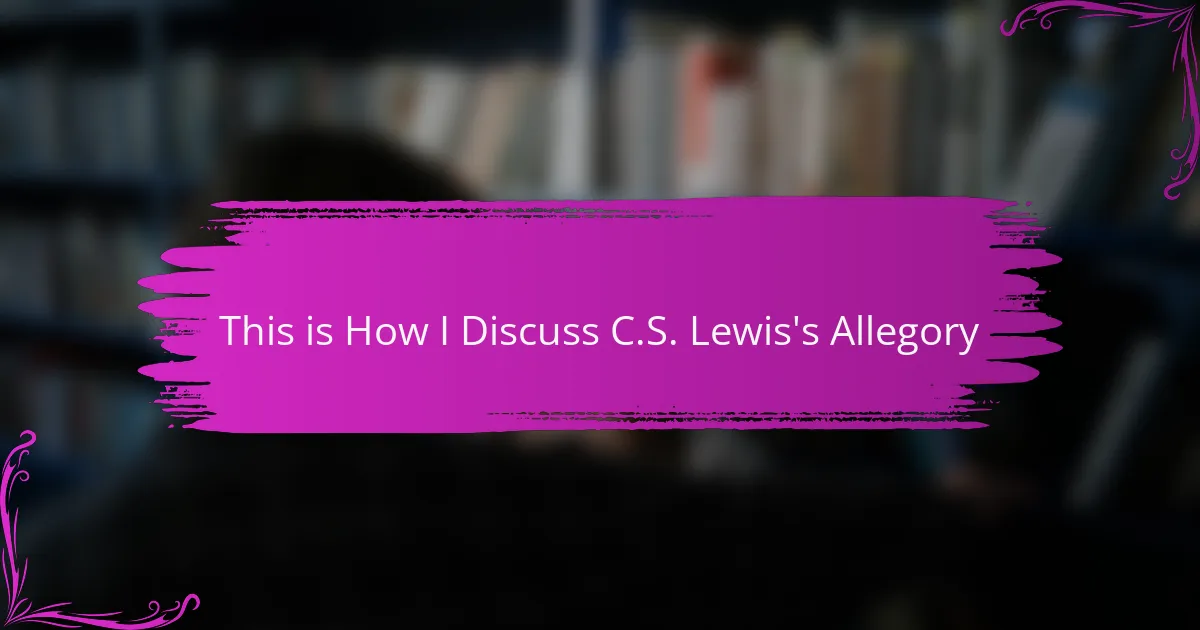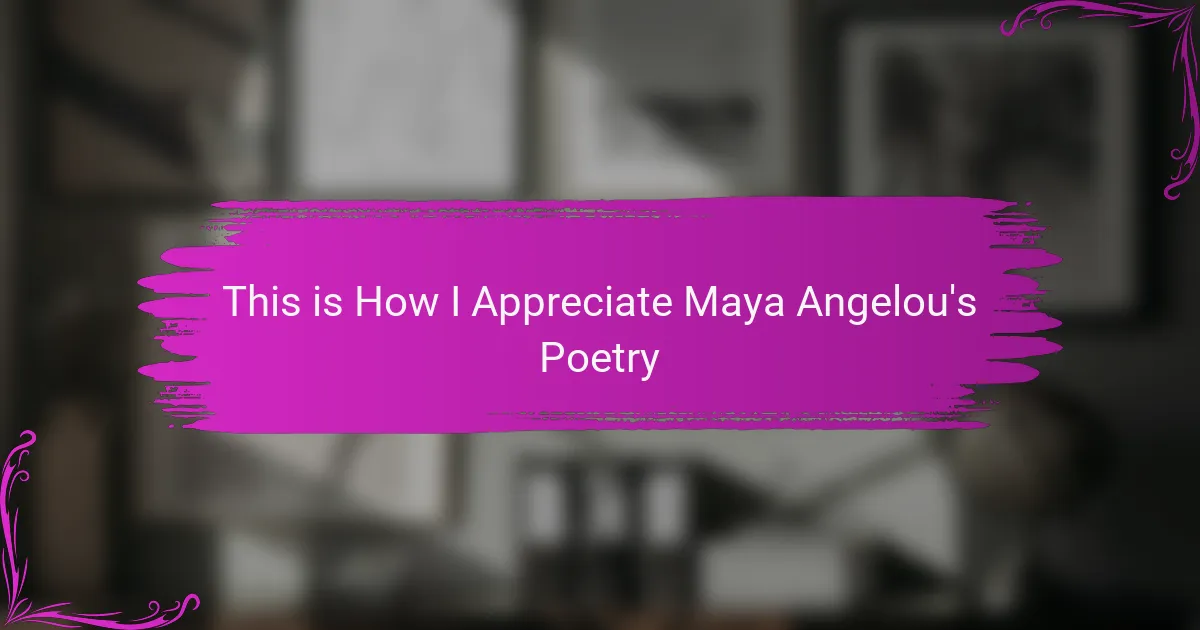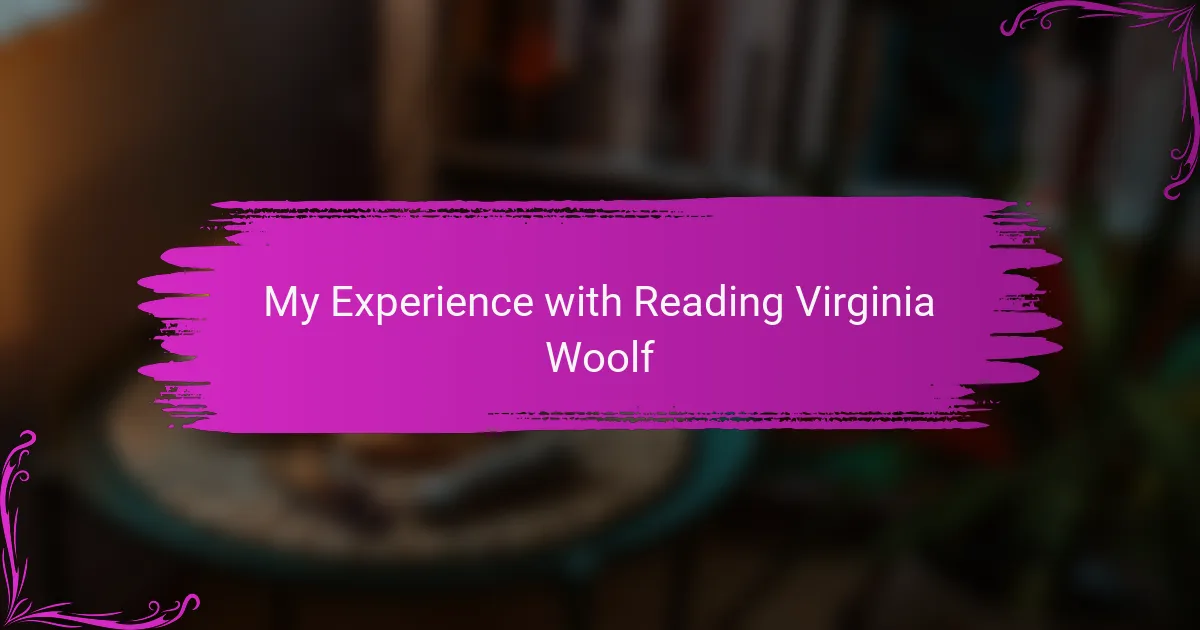Key takeaways
- C.S. Lewis’s allegories use imaginative storytelling to convey deeper truths about faith, morality, and personal experiences.
- Allegories encourage critical thinking, self-reflection, and discussions about complex moral dilemmas and universal themes.
- Key themes in Lewis’s works include the intersection of faith and reason, the struggle between good and evil, and the importance of moral choices.
- Engaging with Lewis’s allegories in education fosters personal connections and creative expression, making abstract ideas relatable and meaningful to students.
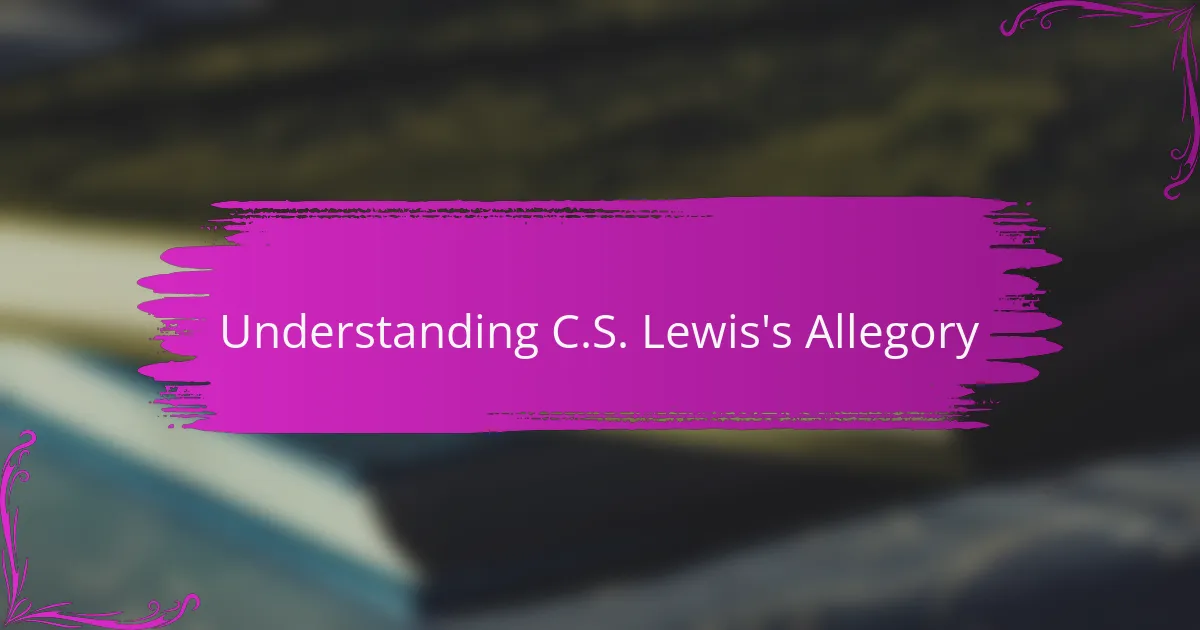
Understanding C.S. Lewis’s Allegory
C.S. Lewis’s allegories often use imaginative landscapes and characters to convey deeper truths about faith, morality, and the human experience. When I first encountered “The Chronicles of Narnia,” I found myself captivated not just by the adventures of the Pevensie siblings, but by the rich symbolism woven throughout. Have you ever felt that a story resonated with you on a level that transcends its narrative? That’s what Lewis achieves—he invites readers to see themselves within the allegorical framework.
One of the most striking elements of Lewis’s allegory is his ability to make complex spiritual concepts accessible. Take “The Lion, the Witch and the Wardrobe” for example; Aslan’s character is a powerful representation of sacrifice and redemption, echoing themes that are both universal and deeply personal. I vividly remember discussing this with friends, grappling with our interpretations, which deepened our understanding of not just the story, but of our own beliefs and struggles.
Furthermore, Lewis doesn’t shy away from presenting moral dilemmas and the choices that define us. This choice aspect is particularly profound—when Lucy first encounters Aslan, it raises questions about trust and faith that can stay with you long after the page is turned. Have you ever faced a moment that simply demanded a leap of faith? In these moments, Lewis’s allegory serves as a reminder that our journeys, much like those of his characters, often reflect the larger tapestry of our lives.
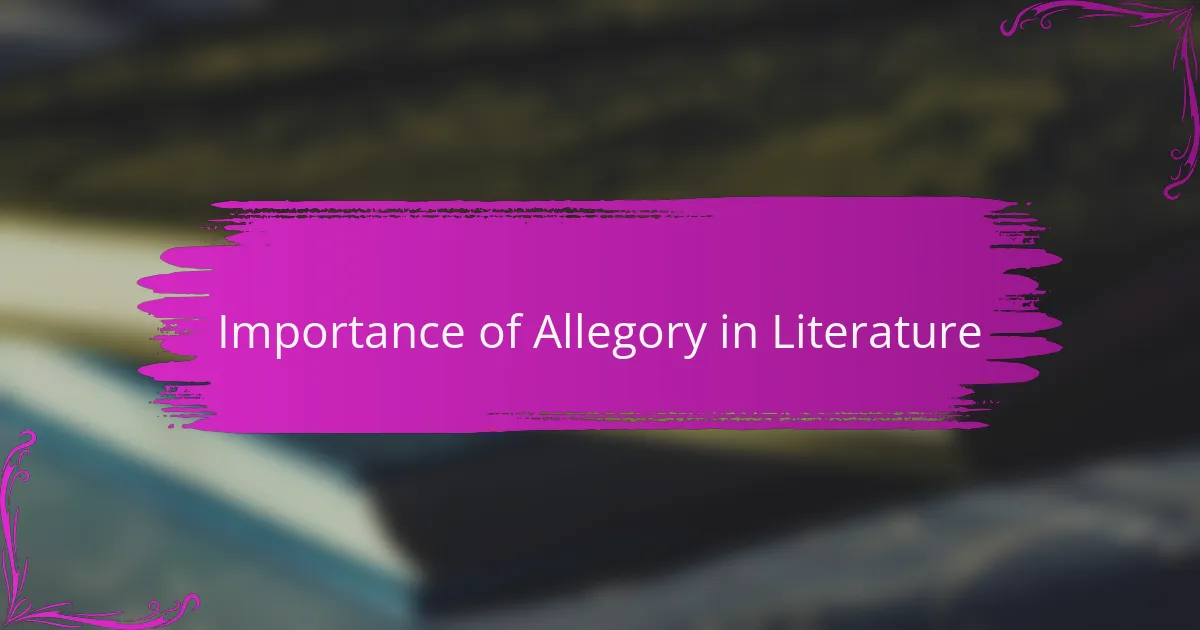
Importance of Allegory in Literature
Allegory plays a significant role in literature, allowing authors to convey complex ideas and moral lessons through symbolic figures and actions. I remember the first time I encountered an allegory in C.S. Lewis’s “The Chronicles of Narnia.” It was enlightening how the story of Aslan mirrored the themes of sacrifice and redemption, drawing me deeper into the narrative. It was a profound experience that made me reflect on my beliefs and the world around me.
When authors use allegory, they can address significant themes that resonate with human experiences, often evoking strong emotional responses. Readers may find personal connections in these stories, which can lead to self-reflection and discussions about life’s bigger questions. Here are some key points highlighting the importance of allegory in literature:
- Moral Lessons: Allegories often encapsulate ethical dilemmas, urging readers to ponder their values.
- Universal Themes: They tackle universal issues, making the narrative relatable across different cultures and times.
- Engagement: Allegorical tales encourage deeper reading and interpretation, sparking thoughtful discussions.
- Personal Connection: Readers may identify with characters or situations, creating an emotional link to the story.
- Complex Ideas: They simplify complicated concepts, making them more accessible and engaging to a wider audience.
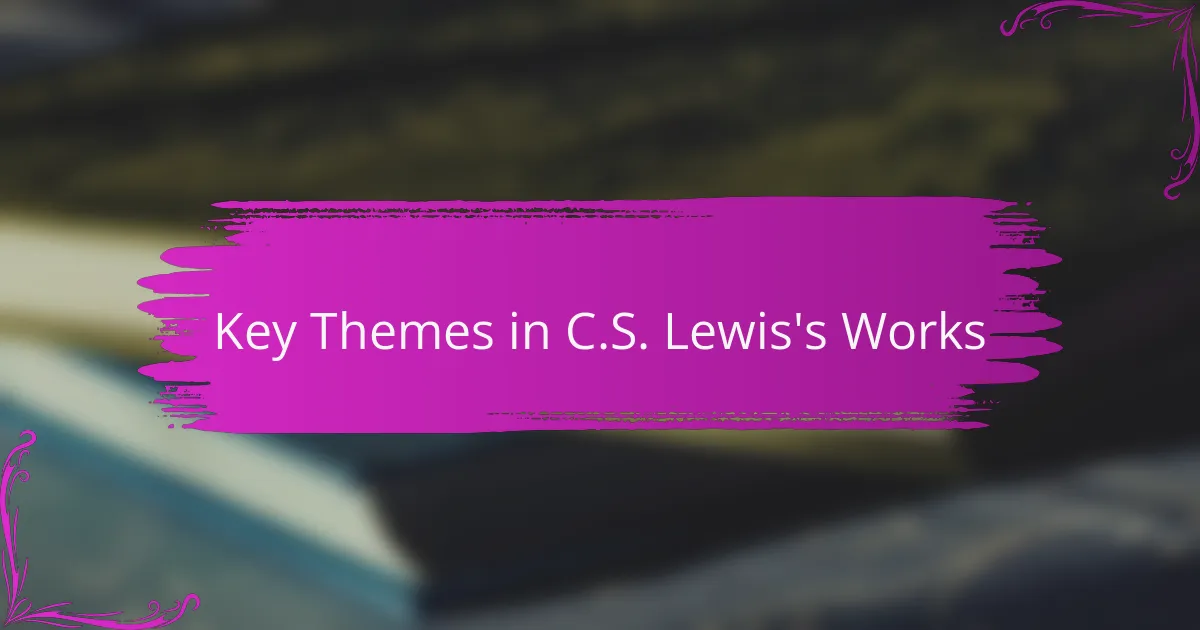
Key Themes in C.S. Lewis’s Works
Key Themes in C.S. Lewis’s Works
C.S. Lewis masterfully intertwines themes of faith and reason throughout his writing. I remember when I first encountered his book “Mere [censured]”; it was like a lightbulb moment for me. His ability to articulate the relationship between morality and belief resonated deeply, prompting me to reflect on my own convictions.
Another significant theme is the struggle between good and evil, vividly illustrated in “The Chronicles of Narnia.” The battle against tyranny in those stories made me feel the weight of moral choices and their consequences. It’s this emotional engagement with his characters that makes Lewis’s narratives so impactful.
- The intersection of faith and reason
- The battle of good vs. evil
- The importance of moral choices
- The role of imagination and storytelling
- Redemption and forgiveness through love
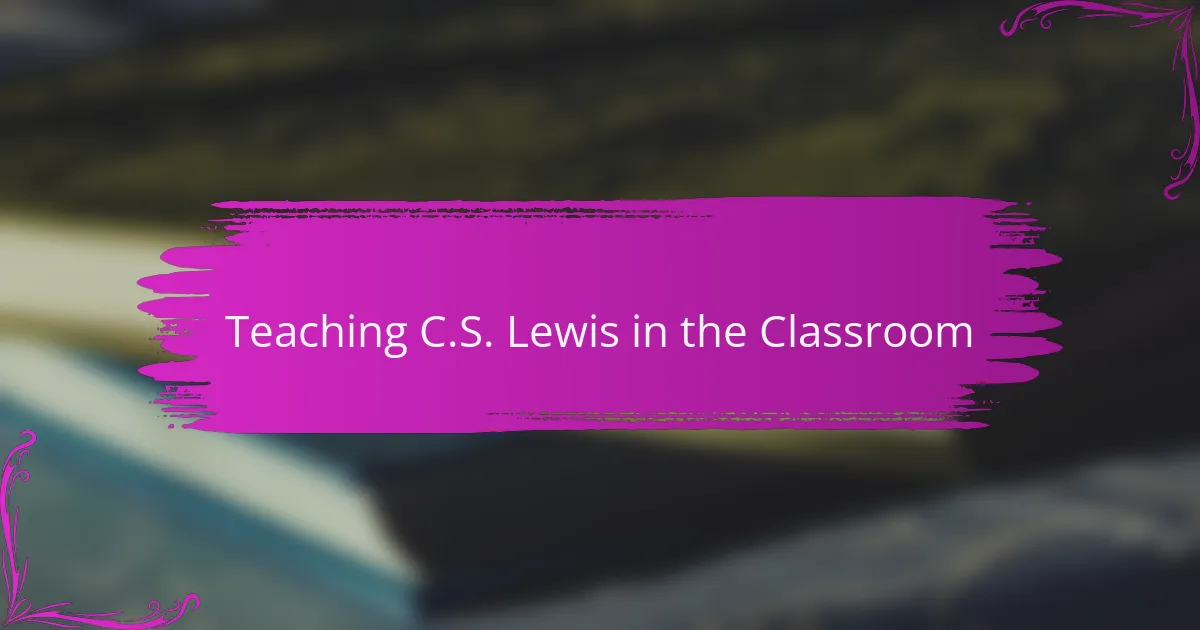
Teaching C.S. Lewis in the Classroom
Teaching C.S. Lewis in the classroom can be incredibly rewarding for both educators and students. I recall leading a discussion on “The Lion, the Witch and the Wardrobe,” where students were fascinated by how Lewis used allegory to explore themes of sacrifice and rebirth. Have you seen students light up when they connect a character’s journey to their own experiences? That moment of realization can be transformative.
In engaging with Lewis’s texts, I often encourage my students to reflect on their beliefs. We dive into Aslan’s role as a [censured] figure and discuss how this impacts our understanding of sacrifice and goodness. I remember one student sharing how Aslan’s sacrifice mirrored her own feelings about family and loyalty. It was a poignant reminder of how literature can act as a vehicle for deeper personal exploration.
It’s essential to present Lewis’s allegory not just as a literary device, but as a lens through which students can examine their lives. When I introduce moral dilemmas from his stories, I prompt my students to think critically. How would they handle a similar situation? This approach not only fosters critical thinking but also deepens their emotional connection to the text, encouraging them to see parallels between the fictional and their own worlds.
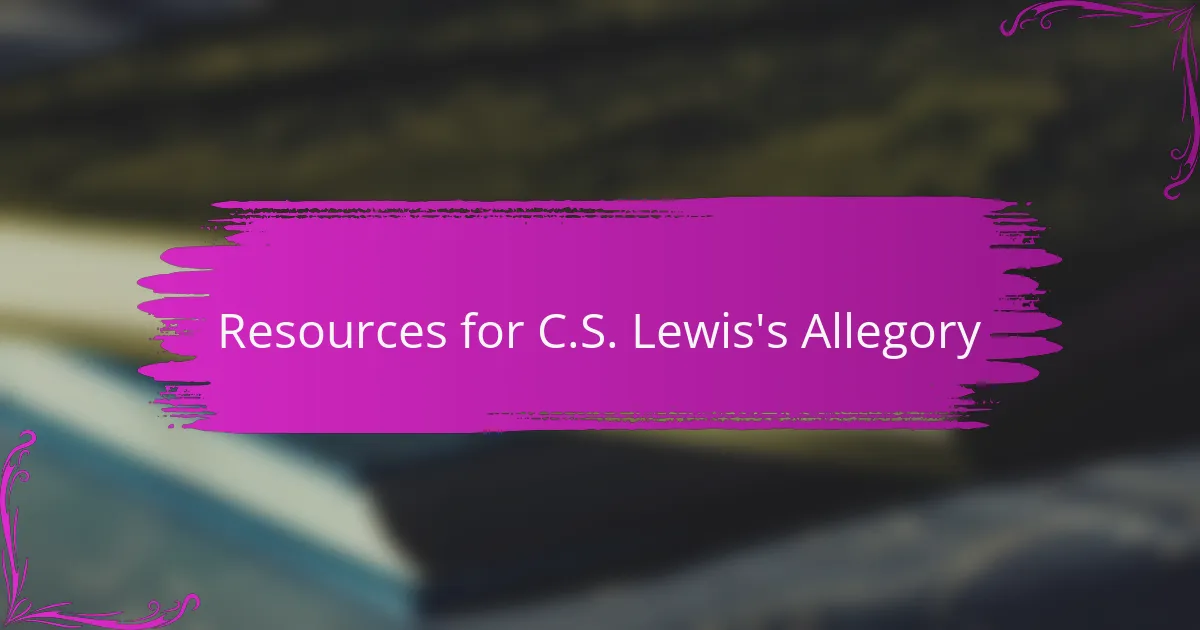
Resources for C.S. Lewis’s Allegory
When exploring resources for C.S. Lewis’s allegories, it’s invaluable to tap into discussion guides and scholarly articles that delve into the symbolism behind his work. I remember stumbling across an insightful guide that broke down each character in “The Chronicles of Narnia,” revealing the hidden layers I hadn’t considered before. Such resources can deepen our understanding, making connections between Lewis’s themes and our own lives.
Participating in online forums can also be beneficial. I once joined a book club focusing on Lewis’s works, and the exchange of ideas was enlightening. Hearing different perspectives on characters like Aslan brought new insights into their allegorical meanings. Have you ever been in a discussion where someone offered an interpretation that changed your viewpoint entirely? These moments can truly enhance our appreciation of Lewis’s craft.
Lastly, I highly recommend exploring audio and video resources—lectures, podcasts, or even documentaries about Lewis’s life and literary approach. I found a podcast that featured a lively discussion on the allegory in “The Great Divorce,” which left me pondering its themes long after the episode ended. Engaging with various media can make Lewis’s profound ideas more accessible and resonate on multiple levels.

Engaging Students with Allegory
Engaging students with allegory can be truly transformative. I vividly recall a moment in my classroom when we unpacked the significance of the wardrobe in “The Lion, the Witch and the Wardrobe.” The students were intrigued by how this simple object served as a gateway to another realm, prompting discussions about the thresholds we face in our own lives. Have you ever had a conversation that completely shifted your perspective? That’s the kind of dialogue I aim to foster.
One effective way to bring allegory to life is through creative projects. I once had students create their own allegorical characters, reflecting personal struggles or beliefs. This not only deepened their understanding of Lewis’s allegories but also encouraged them to express their own narratives. Seeing their creativity flourish made me realize how deeply personal these themes can resonate. It’s incredible to witness students connecting their experiences with the abstract ideas presented in literature.
Moreover, open-ended questions play a crucial role in stimulating critical thinking. Instead of simply asking what Aslan represents, I might pose, “In what ways can you identify a mentor in your life, similar to Aslan?” These kinds of questions invite students to draw connections between fiction and reality, paving the way for deeper insights. I’ve seen firsthand how this kind of engagement elevates discussions and empowers students to explore their beliefs through the lens of allegory.
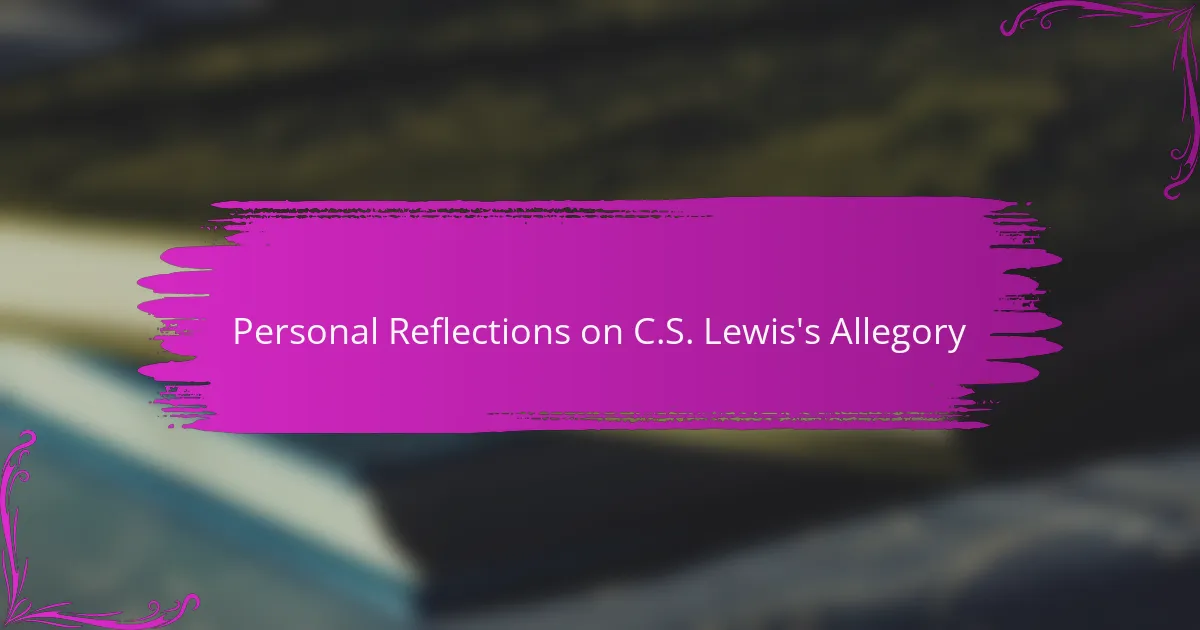
Personal Reflections on C.S. Lewis’s Allegory
When I first encountered C.S. Lewis’s allegories, I was fascinated by how he wove complex themes into simple narratives. His approach reminds me of those moments in my life when a story profoundly shifted my perspective. The way he uses characters to represent larger truths is not only enlightening but also encourages deep reflection.
In my experience, Lewis’s allegories often provoke a personal connection. I recall reading “The Chronicles of Narnia” during a time of uncertainty, and the character Aslan’s sacrifice resonated with me. It prompted me to contemplate themes of redemption and courage in my own life.
- Allegories serve as a bridge to understanding complex moral and philosophical concepts.
- Lewis’s use of familiar settings makes profound ideas accessible, inviting readers to reflect on their personal experiences.
- Characters like Aslan and the Pevensie siblings allow readers to explore themes of sacrifice, faith, and morality in relatable ways.
